�

�
Abingdon For MG Enthusiasts
��
as published in British V8 Newsletter, Volume XV Issue 2, September 2007�
�
by: Curtis Jacobson�
�
Background Information�
�
The charming market town of Abingdon, in Oxfordshire England, was the home of �
the MG car company from 1929 until plant closure in 1980. Few car companies �
have ever been more closely associated with a specific place, so it's natural �
that Abingdon would be a "must see" for any MG enthusiast who visits England.�
Even now, visiting Abingdon gives some insight into why MG cars were designed �
and built the way they were. �
�
Abingdon sits on the quiet banks of the Thames River, upstream from London. At �
Abingdon the smaller Ock River feeds into the Thames. That's the old way to get �
to London, but now with updated train service commuters can travel into London's �
Paddington Station in about 45 minutes. Partly for this reason, Abingdon is �
growing in population. However, the town still retains its small town feel. �
By my quick census there seem to be about 23 neighborhood pubs within the town �
limits, and both of the two pubs we visited were exceptionally friendly.�
�
The village of Abingdon was a cultural hub even before the Romans arrived in �
England. Abingdon is in the middle of "white horse country", the area where �
pre-Christian residents scratched the outlines of horses into chalky hillsides. �
(Did they intend for them to be viewed from space?) Roman missionaries established �
the Abingdon Abbey. Many people believe the abbey to date to about 166 AD; and it's �
certainly one of the oldest in England. Interestingly, it was a destination for �
pilgrimages because people believed one of the nails from Christ's cross was re-used �
in the building's foundation. In more recent times, Abingdon has been overshadowed �
by a famous nearby college town: Oxford University is just eight miles north of Abingdon.�
�
Abingdon is situated in a rich agricultural area. The "Cotswolds" region �
stretches from Abingdon out toward the North and West. Historically this was a �
major wool producing region. Small farms border most of the narrow country roads �
around Abingdon. I was surprised that there weren't more hills, but perhaps I �
shouldn't have been. Between flatness and the relatively short distances between �
turns, it shouldn't be a big surprise that MG cars were never famous for powerful �
engines. However, Oxfordshire roads are far smoother and narrower than the roads �
around Detroit.�
�
The Morland brewery was located in Abingdon until it was bought-out by the �
Greene King brewery in 2000. Morland's most famous beer was its "Old Speckled Hen"�
ale. Introduction of this beer was coordinated with the fiftieth anniversary of �
MG's time in Abingdon. (They closed one year later.) Old Speckled Hen ale was named �
after a particular MG car that was used for errands around the MG facility. The �
Old Speckled Hen car was a "Featherweight Fabric Saloon", made from cellulosed fabric �
stretched over a wooden frame! It was built in the Morris factory at Cowley and �
brought to Abingdon when the MG plant first opened. �
�
In my opinion, since the closure of the MG factory the electronic rock band "Radiohead" �
has undoubtedly been Abingdon's most important export. �
�
For Car Enthusiasts, Tours Begin at the MG Factory Site�
�
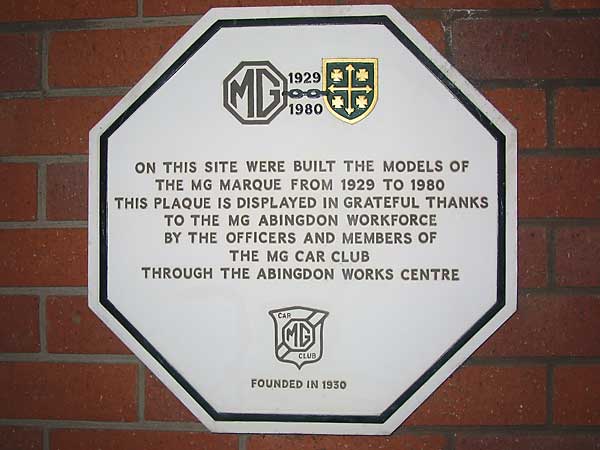
� On this site were built the models of the MG marque from 1929 to 1980.
� This plaque is displayed in grateful thanks to the MG Abingdon workforce
� by the officers and members of the MG Car Club through the Abingdon works center.
� (MG Car Club, founded in 1930)
�
�
After the MG plant closed, the entire property was sold to the Standard Life �
insurance company, which developed most of it into a large business park. This �
plaque is posted at the business park's entrance. If you can't get past the �
locked gate, don't worry. Probably everything you want to see is actually �
outside the gate.�
�
Not Sure You Believe Me?�
�
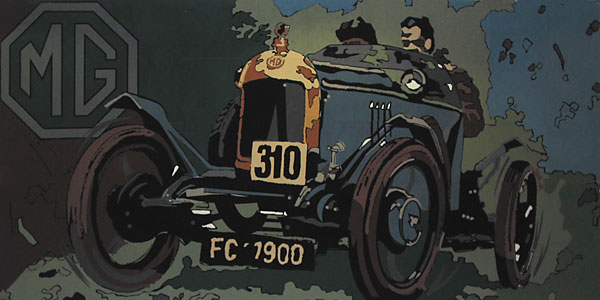
� The car illustrated here ("FC 7900") is commonly known as "Old Number One".
� Cecil Kimber won a Gold Medal driving this car in the 1925 Lands End Trial.
� The car is at the British Automotive Heritage Museum. (The "bull nose" radiator
� and number plate are distinctive. Old Number One was later painted red.)
�
�
Okay, maybe there is one interesting thing beyond the locked security gate. �
A kind guard unlocked the Standard Life office building and invited us inside �
to see two wall hangings that were commissioned by the insurance company to �
honor the MG company and its workers. Interestingly, neither wall hanging shows �
car models that were built at Abingdon. "Old Number One" (shown here) was built �
in 1924 and 1925 before MG moved out of the Morris facilities in Cowley. It �
does however capture the true spirit of MG. A second wall hanging, displayed �
upstairs from this one, shows an MGF. The MGF model was developed and built by �
Rover long after MG offices and the Abingdon plant closed.
�
�
Start Your Factory Tour at the Big Map�
�
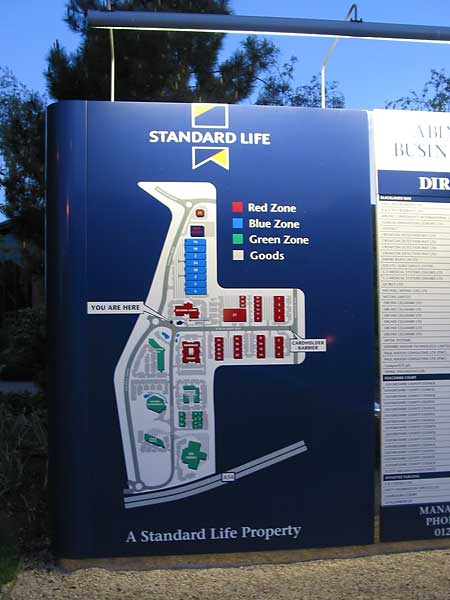
� To get your bearings, it might helpful to note that this map is upside down.
� North is at the bottom, and the road you came in on is at the top.
�
�
The main drag into Abingdon from the west is the A415, which is called the Marcham �
Road. The MG facilities were on the north side of Marcham Road, straddling both �
sides of Colwell Drive. Colwell Drive is shown running top-to-bottom down the map. �
The only MG factory buildings that remain standing are the buildings marked �
"Blue Zone" on this map. �
�
The Historic "B-block"�
�
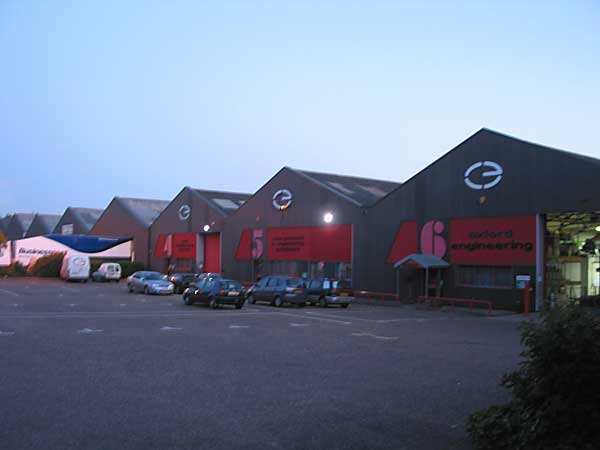
� The blue zone corresponds to "Colwell Drive Units 1 though 6" but in MG days
� these buildings were known within the factory complex as "B-block".
�
�
Whereas A-block (which used to stand on the opposite side of Colwell Drive) was �
the main assembly plant, according to the John Price Williams book "Making MGs", �
B-block housed the tire fitting bay, final inspection, paint repair booths, the �
"rectification" (mechanical repair) shop, the Competitions Department (factory �
race team), and the Product Design group. According to Williams, the Special Tuning �
(performance parts) department and the export dispatch office were located around �
the corner in C-block, which was among the first parts of the facility to be �
demolished. (Referring to the map above, they would have been to the right of the �
"you are here" label.)�
�
B-block actually consists of eight equal-sized bays. �
�
They're addressed (south to north) as numbers 1 thru 6, with units "1" and "3" subdivided.�
�
| MG Department or Function | Current Occupant (as of May 2007) | |
| Unit 1a: (Bay 1) | Competitions Department (at least in later years) | Unoccupied and For Rent! (formerly Viney's Distribution) � Relocate your business into a part of the old MG plant! � Contact "Benedicts" at phone number 01865-883364. � This 1093 square meter (11767 square feet) facility � can be leased for about 56,000 British pounds. |
| Unit 1b: (Bay 2) | Special Tuning Department (at least in later years) | Barloworld "Leading Brands" - I think they lease heavy construction machinery |
| Unit 2: (Bay 3) | Tire Fitting | Creative Productivity Ltd. a commercial printing service |
| Unit 3a: (Bay 4) | Paint Repair | Howdens Joinery Co. "Doors, Flooring, Kitchens, Hardware, and Joinery" |
| Unit 3b: (Bay 5) | Mechanical Repair | Business Post "Worldwide Express Parcels and Mail" |
| Unit 4-6: (Bays 6-8) | Experimental/Development Department (Engineering was on a Bay-6 mezzanine, and the Drawing Office was downstairs.) | Oxford Engineering "Total Manufacturing Solutions" - www.oxfordengineering.com |
�
�
A-block has recently been replaced by a large and modern looking police station.�
�
The Pavlova Leather Connection to MG�
�
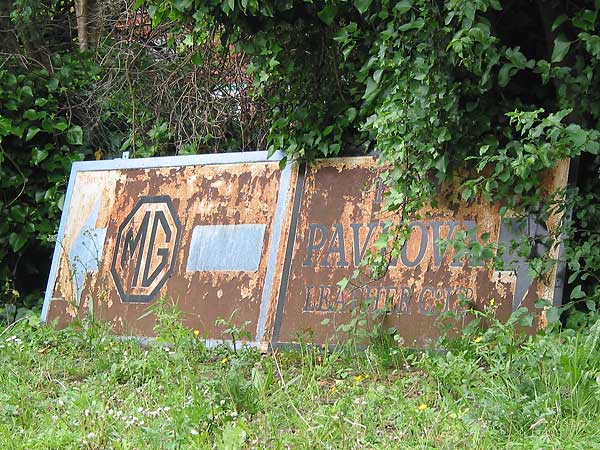
� The histories of MG and of Abingdon are closely associated with the Pavlova Leather Co. Ltd.
�
�
Pavlova Leather was a tannery of glove leather that operated in Abingdon at least as �
far back as 1860. Its production changed over the years due to market demand. At one �
time it was known for book-binding leathers. Today, most people remember Pavlova for �
automotive upholstery. Pavlova Leather was purchased by Alfred Booth and Company of �
Liverpool in 1921, and came under reorganization that included sale of a large real �
estate parcel in 1929 to the MG car company. It was a copasetic agreement because MG �
became a significant customer for upholstery material. The Pavlova Leather tannery, �
operating from a facility just north of the MG factory, remained in operation until �
1989.�
�
We didn't drive up Colwell Drive to see what, if anything, remains of the Pavlova �
facility. I've been told that it's all been converted into housing. Although Pavlova �
Leather was established at least 21 years before the famous Russian ballet dancer �
Anna Pavlova was born, apparently an Abingdon real estate developer saw profit in �
creating an artificial association. At the former site of the tannery, Blacklands �
Way dead-ends into a residential street called "Anna Pavlova Close". �
�
If you travel just north of the Blacklands Way traffic circle and peek behind a row �
of trees on your right, it should be possible to see the concrete pad where MG �
crash-tested cars. �
�
Enjoy a Visit to The MG Car Club Ltd.�
�
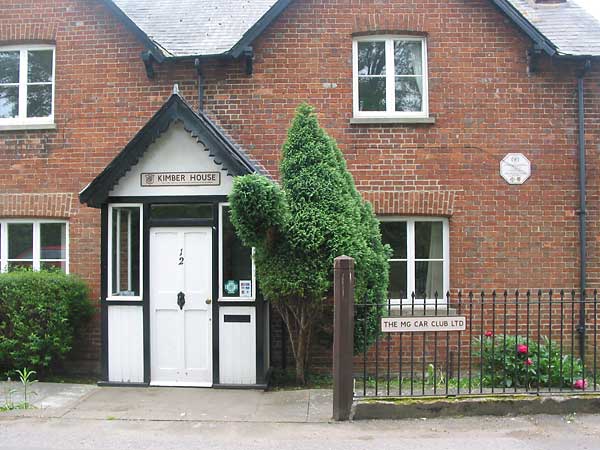
� MG Car Club Offices at #12 Cemetery Road
�
�
The MG Car Club is officed in this charming brick house, which they've named "Kimber �
House" after Cecil Kimber, the great man who fathered the MG company (as a spin-off �
of the Morris car company) and who led MG for many successful years. Cecil Kimber �
actually lived in different homes that were less convenient to the factory. (From �
1933-38 he lived at 69 Oxford Road. That very large home was converted into a �
modern inn about twenty years ago, and it operates under the name "Boundary House".) �
The car club's house was originally owned by a manager of the Pavlova Leather tannery.�
�
Although it's far from obvious today (since Cemetery Road is blocked to through �
traffic at Colwell Drive, and you have to drive through a residential neighborhood �
to find the Kimber House), the MG Car Club office is actually next door to the original �
plant's administrative "top office". The administrative building still stands, although �
the interior was completely gutted and remodeled in 2005, and the original red brick �
exterior has been covered in wood. The building is now a residential apartment building.�
�
The MG Car Club Office has an excellent gift shop and a small but interesting collection �
of MG memorabilia on display. �
�
It's Interesting to Note what MG Car Club Employees Drive To Work�
�
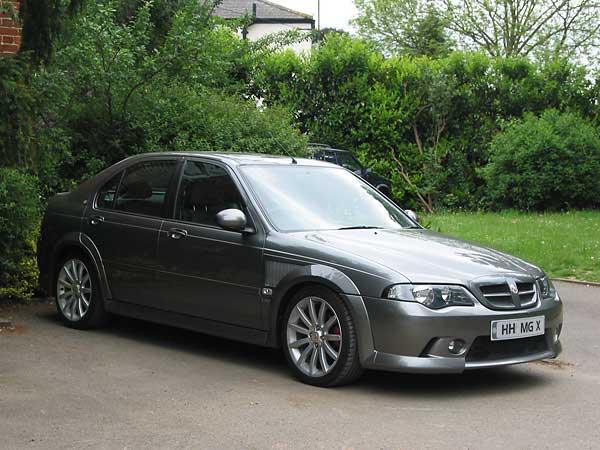
� 2004 MG ZS180 in "XPower Grey".
�
�
"MG Rover Group" operated from 2000-2005. In that time they produced about 340,000 cars.�
The company was led by CEO John Towers, and reached a peak size of about 6000 employees. �
MG Rover Group production was at Austin's old Longbridge plant, near Birmingham, not at Abingdon.�
�
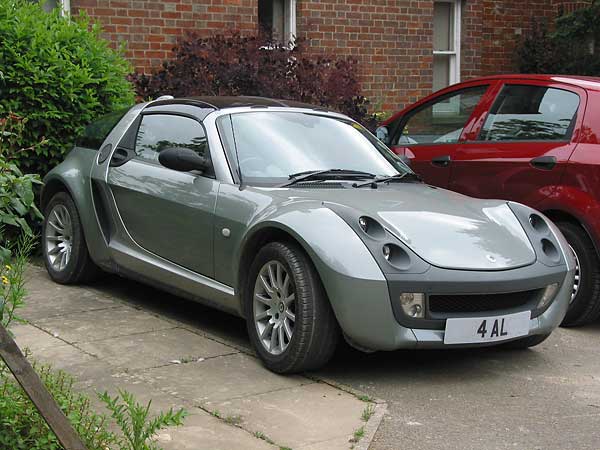
� Smart "Roadster Coupe" (not to be confused with the company's earlier, dowdy "Coupe" mini-car model)
�
�
Smart GmbH was formed by Mercedes Benz in joint venture with the Swatch Group Ltd. watch company.�
Engine: rated 60kW (80hp). Weight: 790kg (1742lb). About 43,000 were made from 2003 through 2005.�
Lightweight and nimble, this car is often compared to classic British sports cars like the MG Midget. �
The tooling has been sold to an English investment group (called "Project Kimber") and plans are�
being made to reintroduce a re-styled version with Mitsubishi engine, badged as an "AC Ace".�
�
The Abingdon County Hall Museum�
�
After visiting the MG Car Club Office, proceed to the Abingdon County Hall Museum, �
which is located downtown in the old county hall building. This 1678 building was designed �
by Sir Christopher Wren's master mason, Christopher Kempster. It's interesting in that its �
open first floor served as a covered market. Immediately opposite this building are the �
medieval abbey grounds. �
�
Reportedly, the Abingdon County Hall Museum has an excellent collection of MG materials. �
They're currently featuring a special exhibit called "The Making of MG". Although the museum �
is open daily, this special exhibit is only open Saturdays and Sundays through April 27, 2008. �
Sadly, the exhibit hadn't started yet when we were in Abingdon. Check the museum's website for �
further or updated information: �
Abingdon Museum, or call�
telephone number 01235-523703.�
�
Abingdon Public Houses �
�
Based on my too short visit, I can't recommend one pub over another. (We only got �
to try two.) Instead, here are notes I made for next time! For directions, Google �
the pub names followed by the word "Abingdon".�
�
As mentioned above, "The Boundary House" is located in Cecil Kimber's house (where �
the founder of MG lived from 1935-39.)�
�
"The Barley Mow" at Clifton Hampden has an excellent river-side location and a distinctive �
thatched roof. It's about 650 years old! I'm told that it appears in many early MG �
promotional photos, although the entrance has changed somewhat and the pub has burned down �
and been lovingly rebuilt since those days. �
�
"The Magic Midget" (named after a particular famous MG, "EX127" that topped 120mph in 1932.)�
was a pub seemingly particularly for and by MG enthusiasts. Rumors of its demise aren't all�
true, but the latest information we have is that the name has been shortened to "The Midget" �
and the interior has been remodeled to more of a "wine bar" aesthetic.�
�
One kind gentleman told me that "The Kings Head" was most popular with his fellow MG �
employees after hours. �
�
"The White Horse" is the closest pub to the old factory or to The MG Car Club, followed �
by "The Cross Keys" about one block further down the street. I was dissappointed to not �
find one single item of MG memorobilia at The White Horse. The place was cheerful, so we �
stayed and enjoyed a couple pints with the locals.�
�
Driving the MG Test Routes
�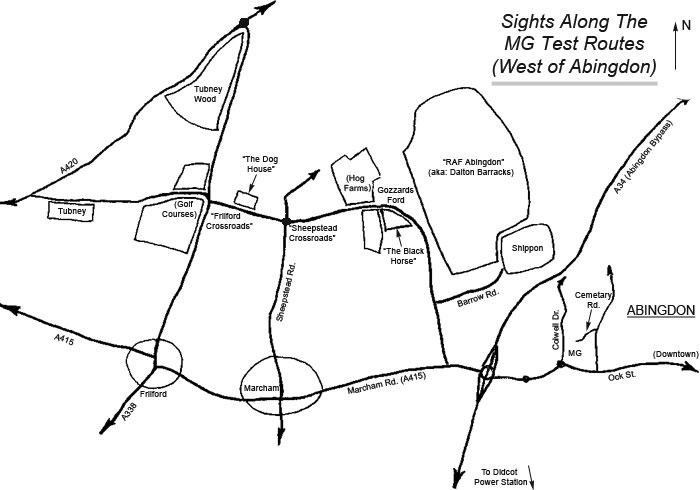
�
�
Until about 1970, all MG cars were taken for test drives before they were released from �
the factory. At that time, the factory started using rolling road test stations to check �
the majority of cars, although they continued road testing a statistical sampling. Also, �
they test drove every MGB GT V8. (Maybe the V8 cars were irresistable to the test drivers?) �
It's interesting and enjoyable to retrace the MG test routes, even if you have to settle �
for doing it in a modern rental car.�
�
The MG Car Club has published an excellent map that shows four principal MG test routes. �
You can download it from their website. As it shows, the pre-war route traveled out to �
Frilford and then looped clockwise back to Marcham. The second era route traveled only �
out to Marcham, but then looped clockwise back through Gozzards Ford. Rather than �
reprint the MGCC map here, we've chosen to make our own map with more emphasis on sights �
along the post-1950 routes. �
�
We're told that, from 1950 pretty much all MG cars took one basic test route. The �
only deviation was that MGB-GT V8 cars continued a little farther out so that the cars �
could travel briefly on the A420 and thus reach higher speeds. The basic route was about �
5.7 miles, whereas the extended (V8) route was about 11.2 miles. The basic route is �
"out-and-back", whereas the extension adds a big counter-clockwise loop.�
�
All MG test drives started by leaving the factory and traveling west on the Marcham �
Road (route A415). In retracing the routes, you'll leave the built-up area of �
Abingdon and cross the A34 Abingdon bypass. Immediately after the bypass, you'll �
probably notice two truck rest-areas on opposite sides of the A415. Then, take the �
first road that turns off to the right. Apparently this road doesn't have a proper �
name, but you should see a sign marked "Frilford, Shippon & Dalton Barracks".�
Once you turn right and head north on this road, your navigator can relax and just �
enjoy the ride. �
�
If you start at the MG factory, the turn-off from Marcham Road will be at about the �
one-mile mark. At about the 1.4 mile mark, the Barrow Road will turn off to the �
right. Don't take the turn unless you're curious to leave the route and visit the �
village of Shippon. Immediately after this turnoff, however, look to the right and �
see if you can catch a glimpse of the old "RAF Abingdon" airfield. The airfield �
actually dates to 1932, and it was an active bomber base during WW2. It continued to �
be operated by the RAF into the 1990's, and then was turned over to the Army who �
renamed it the "Dalton Barracks". �
�
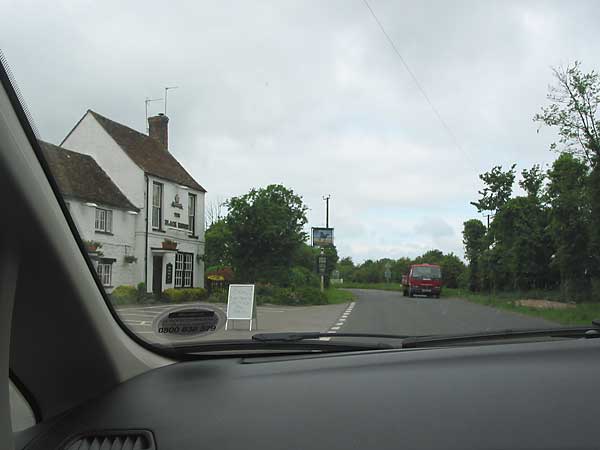
� The Black Horse is a country pub along the test route, in a place called Gozzards Ford
�
�
As the road curves left, away from the airfield, the Black Horse pub will be on your �
left. This is at the 2.1 mile mark.�
�
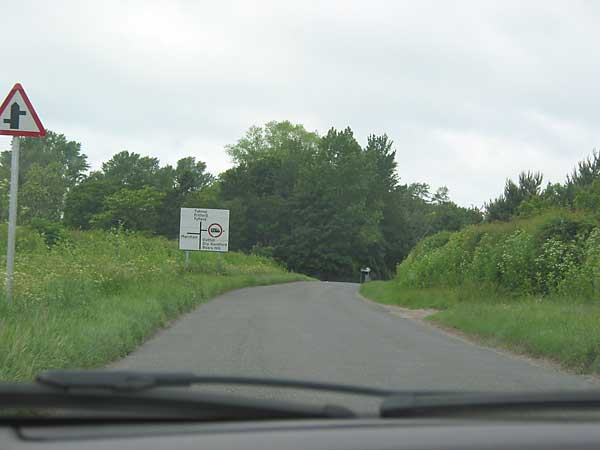
� Thick hedgerows are one of the distinquishing features of rural British roads.
�
�
Before you know it, you'll be at the Sheepstead Crossroads roundabout (i.e. traffic circle, �
which comes up at about the 2.9 mile mark). For a non-V8 MG it would be time to head �
back to the factory. Live a little! The V8-extension adds some very interesting sites to �
the test route.�
�
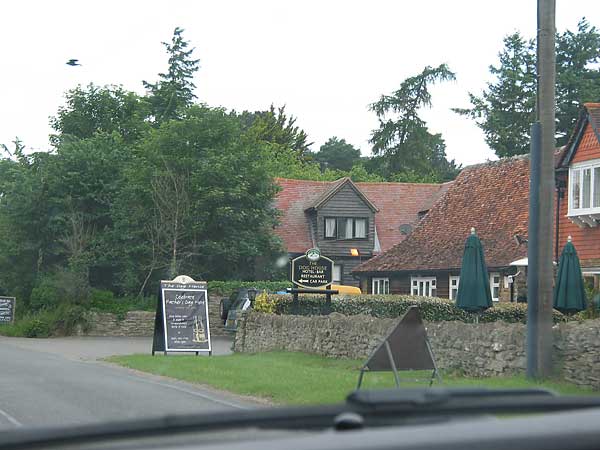
� The Dog House - a pub and country inn near Sheepstead Crossroads
�
�
About 3.2 miles into your drive, you'll reach The Dog House, a charming pub and �
country inn. There's no reason to drink alone in this part of England! If you stop �
at any of these establishments, you'll likely find that the natives are particularly �
friendly. This matches something we've always read about the MG factory at Abingdon. �
Throughout all of the unrest and poor labor relations that plagued the British car �
industry, Abingdon maintained its reputation for having the most cooperative workforce. �
The MG Car Club motto is "the marque of friendship", but by many reliable accounts �
this label applied first and foremost to the Abingdon workers who built the classic �
MG cars. �
�
Unfortunately British Leyland's Chairman, Sir Donald Stokes, came into his job �
with an unfriendly view of MG. He'd previously been Chairman of Triumph. It was �
Stoke's decision to let MG and the Abingdon plant languish while Triumph developed �
and tooled-up to produce the TR7 (a unibody, 4-cylinder, live-axle coupe that was �
intended to replace the body-on-frame, 6-cylinder, independent-rear-suspension �
TR6 roadster.) Stokes also decided to build the TR7 at Speke (Liverpool). In the �
TR7 model's unhappy lifespan the Speke factory had to be closed, and production �
was moved first to Canley (Coventry), and then to Solihull. That couldn't have �
been very cost effective! Abingdon, where unibody sports cars had been built since �
1958, looked on...�
�
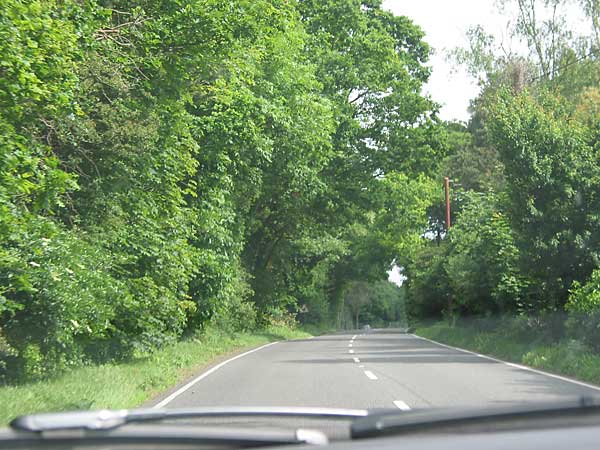
� Turn right on the A338 at Frilford Crossroads, and enjoy driving along the woods.
�
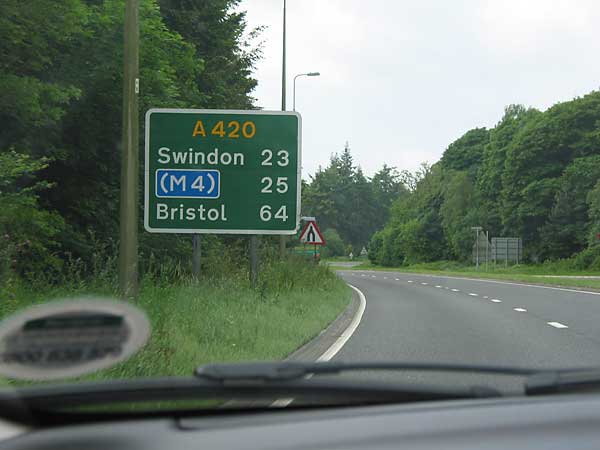
� The A420 expressway gives you a chance to stretch your legs.
�
�
Continuing on, at about 4.6 miles into the drive you'll reach the A420. It's England, �
so you'll enter it from a roundabout - not an American-style highway clover leaf. �
The road is divided-highway for a section, and then merges. Pay attention, watching �
carefully for the turn to "Tubney" (at about 6.6 miles) which will take you back �
toward Abingdon. �
�
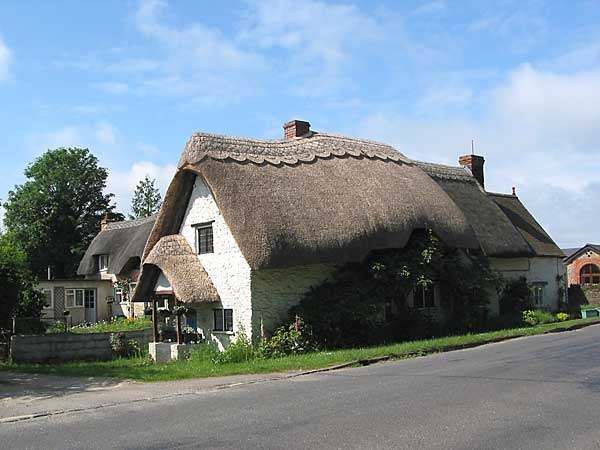
� Thatched-roof houses in the village of Tubney
�
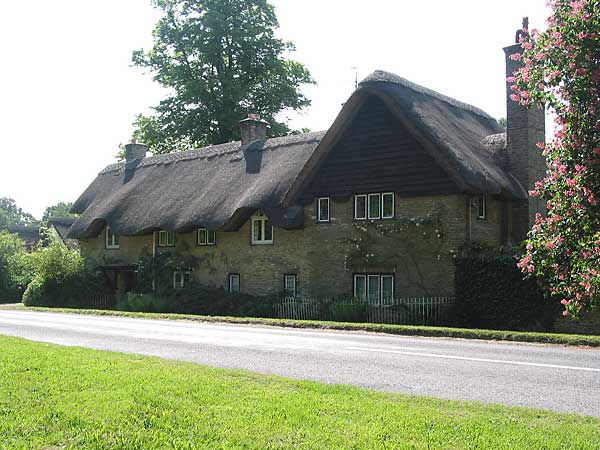
�
�
I challenge you to drive through the quaint village of Tubney without stopping and �
taking pictures. Thatched-roofs and half-timber walls, flower filled gardens, trained �
vines, and ornamental trees in bloom... this is a really pretty place! �
�
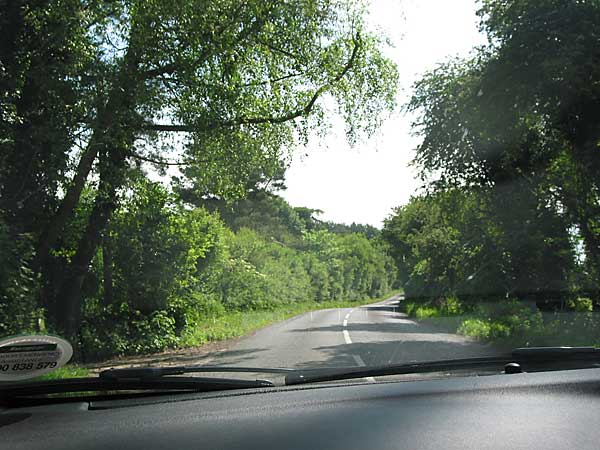
� This photo was taken immediately east of Tubney.
�
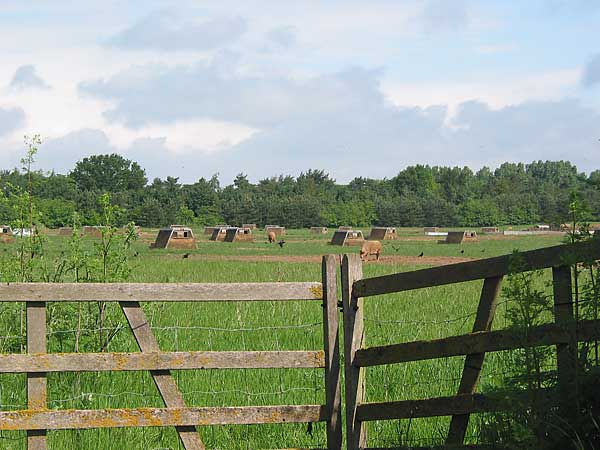
� A hog farm between Sheepstead Crossroads and Gozzards Ford.
�
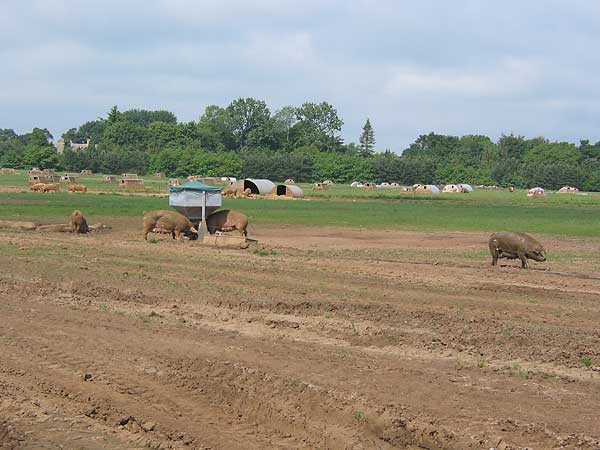
� Some things are easier to spot when you're driving eastbound.
�
�
On the way back to Abingdon, you almost feel like you're driving a different road.�
For example, between Sheepstead Crossroads and the Black Horse pub, you'll pass �
a couple fairly large hog farms that flank both sides of the road. They must have �
been hidden behind hedgerows when we were traveling the other way.�
�
In my opinion, it's certainly worth pulling over and checking these farms out. �
(Be careful though. Customs won't let you back into the USA if you admit to getting mud �
on your shoes here.) In the modern age of "factory farms", the hogs of Oxfordshire �
certainly seem to enjoy fresh air, green grass, and sunshine!�
�
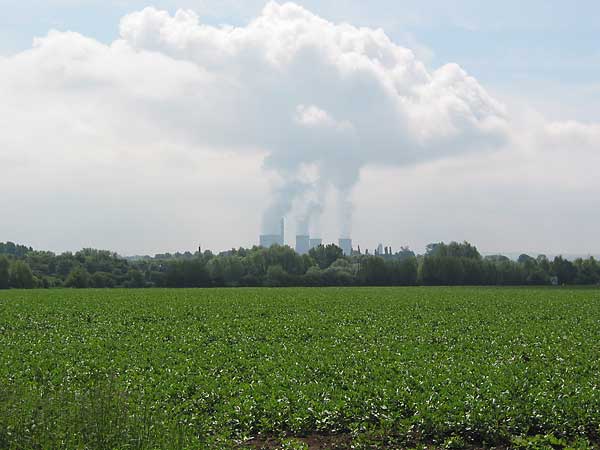
� The Didcot Power Station
�
�
As you pass the Dalton Barracks and you're driving south, it would pretty hard to miss �
this view of the Didcot Power Station. This is a coal fired power plant. (Let me be perfectly �
clear; this is not a nuclear power plant.) Readers of venerable old "Country Life" magazine �
were once polled... and they voted this power station the Third Worst Eyesore in all of Great �
Britain! On the other hand, the station won architectural awards when it was built. Architect �
Frederick Gibberd was very proud of his idea to clump the towers into two groups of three, �
instead of one group of six. �
�
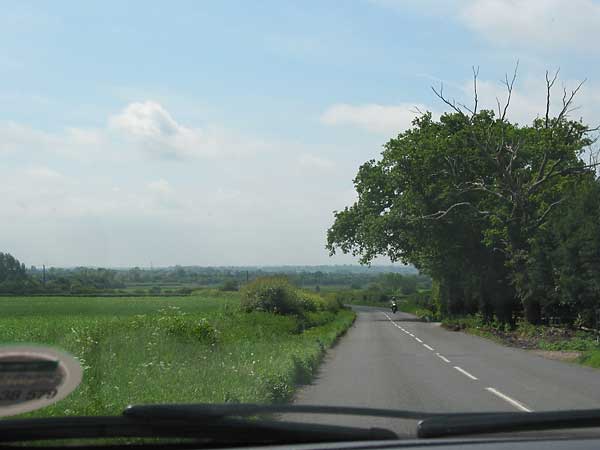
� One more turn in the road and you're headed back into Abingdon.
�
� Note: we wish to thank Andy Knott of The MG Car Club (and Editor of "Safety Fast!"� magazine), MG historian Brian Moylan (author of "MG's Abingdon Factory"), and Mike � Yeadon for their help with fact-checking this article.�
�
